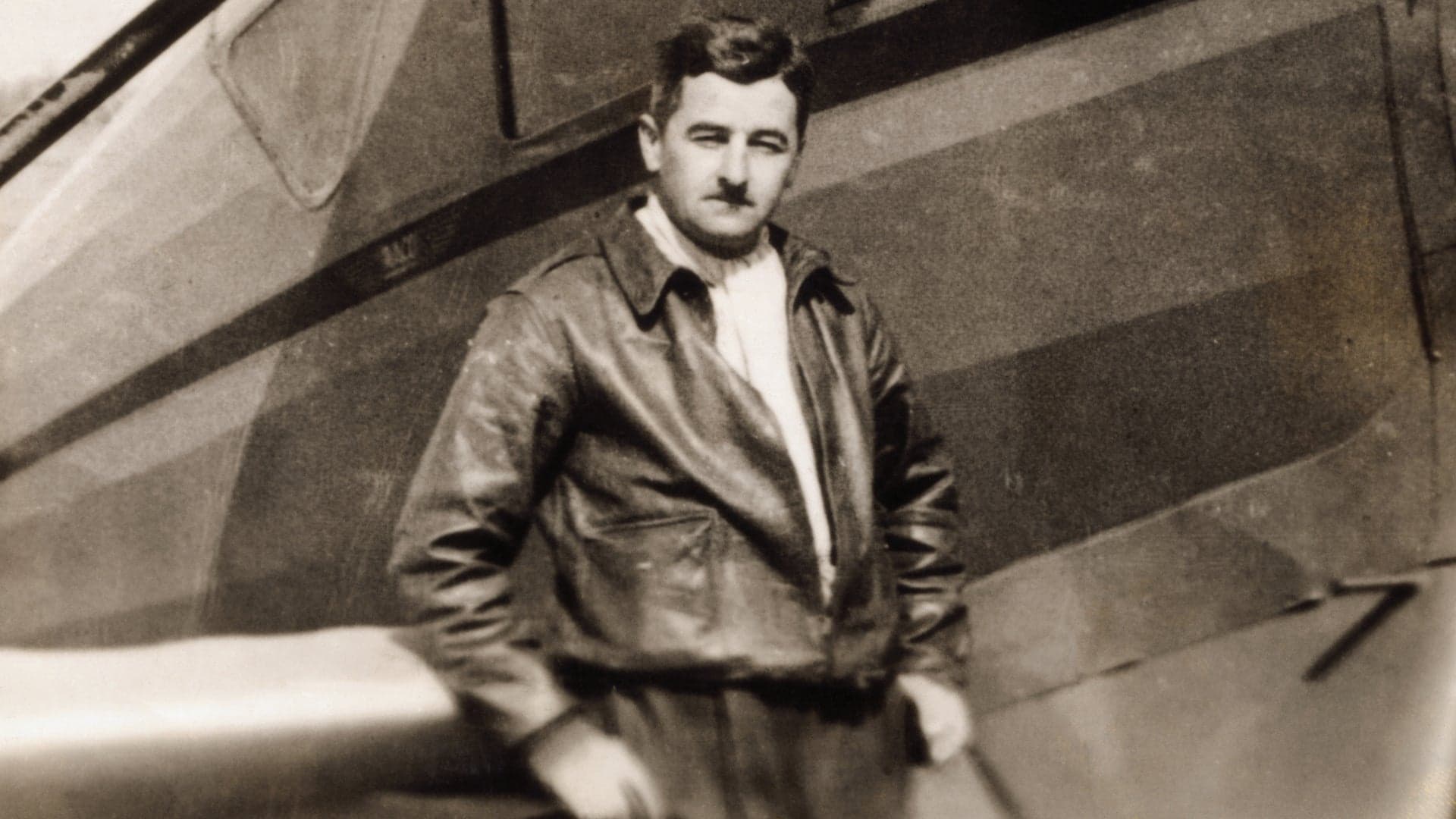William Faulkner, who would go on to become one of America's most iconic Southern authors, joins the Royal Air Force on this day, but will never see combat because World War I will end before he completes his training.
Faulkner joined the RAF after his high school sweetheart, Estelle, married another man. He quit his hometown, Oxford, Mississippi, visited friends in the North, and headed to Canada, where he joined the Royal Air Force. After the war, he returned to Mississippi, where he wrote poetry. A neighbor funded the publication of his first book of poems, The Marble Faun (1924). His first novel, Soldiers’ Pay, was published two years later.
Faulkner got a second chance at his high school sweetheart when Estelle, now the mother of two, divorced her first husband. She married Faulkner in 1929, and the couple bought and restored a ruined mansion near Oxford while Faulkner finished The Sound and the Fury, published in October 1929. The following year, he published As I Lay Dying, with Light in August (1932) and Absalom, Absalom (1936) following.
Faulkner’s novels challenged conventional forms and were slow to catch on with the reading public. His work did not earn him enough money to support his family, so he supplemented his income selling short stories to magazines and working as a Hollywood screenwriter. He wrote two critically acclaimed films, both starring Humphrey Bogart. To Have and Have Not was based on an Ernest Hemingway novel, and The Big Sleep was based on a mystery by Raymond Chandler. He published a classic collection of short stories, Go Down, Moses, in 1942. The collection included “The Bear,” one of his most famous stories, which had previously appeared in the Saturday Evening Post.
Faulkner’s reputation received a significant boost with the publication of The Portable Faulkner (1946), which included his many stories set in Yoknapatawpha county. Three years later, in 1949, he won the Nobel Prize for literature. His Collected Stories (1950) won the National Book Award. During the rest of his life, he lectured frequently on university campuses. He died of a heart attack at age 65.
